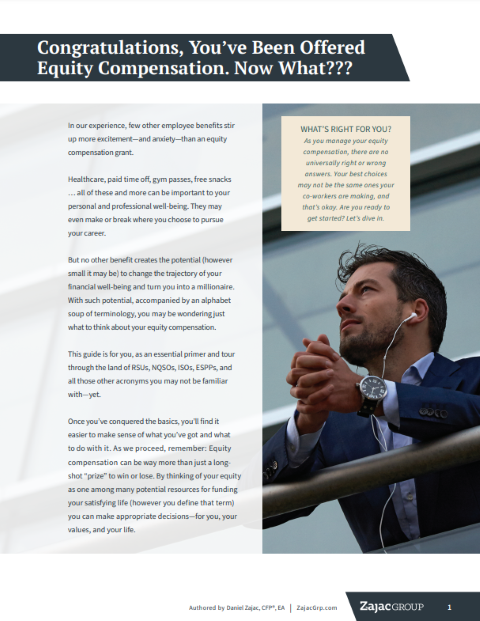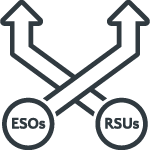Spelling lists, multiplication tables, practicing your cursive (do kids today even use cursive writing)? Remember leaving school for the day and thinking “I can’t believe I have homework, homework is the worst!” All I wanted to do was go play kick the can with the neighborhood kids. Not practice geometry.
Pre-retirement planning is adult homework.
We would all rather be doing something else. As an adult, we work all day and have many other responsibilities. The thought of additional tasks seems suffocating.
But I know this, you don’t want to work forever. So the sooner you get started on you adult homework, the sooner you can retire, right?
So consider me your 6th grade teacher as I provide you with a few simple steps you can take to begin your homework.
Step 1 – Invest Now
It doesn’t matter if you have $1,000 or $1,000,000 saved. You likely need to save more. I have never had a client come to me and say I saved too much!
Where is the best place to save it? That is too detailed for this blog post. And depending on who you talk to, you are likely going to get a different answer. My best advice is to save somewhere; a 401k plan, an IRA, a ROTH IRA, or in a brokerage account. I don’t care where, just save!
My goal here isn’t to give you the absolute best solution; my goal is to get you in good habits. If I am trying to lose weight, the first thing I am going to do is stop eating ice cream and chocolate. I will worry about counting calories and grams of protein later.
Step 2 – Determine Your Risk Tolerance
Great, you are finally saving. How how do you pick the appropriate investments?
The first thing you should do is consider is how you want your money allocated. Do you want it invested low risk or high risk? Asset Allocation determines your risk tolerance.
Other things to consider when considering risk tolerance is your age, your time horizon, your appetite for risk, your capacity for risk, your savings goals, and your income requirement.
The more time you have before you need the money, the more aggressive you may want to be with your investments. If you need it soon, the less aggressive you’ll want to be.
Step 3 – Pick Your Investments
Now that you know how safe or risky you want to be with your investments, you can begin to fill your portfolio with actual investments.
A few more common investments are mutual funds and ETF’s (exchange traded funds). Generally, mutual funds and ETF’s offer broad diversification in a liquid, transparent, and inexpensive manner (some more than others). For the investor who doesn’t know what to do, they can be a great place to start
With that said, mutual funds and ETF’s are created different, and each fills a different need. You’ll want to be sure you have the appropriate diversification (learn more here).
Step 4 – Calculate How Much You Spend
Have you ever considered how much you are actually spending each month or year? As part of your pre-retirement planning, it’s critically important that you know.
You can do this a few ways. The most common strategy to determine how much you are spending is to create a budget. In my experience, people always underestimate what they are spending.
The second way to determine how much you are spending is to compare you take home pay from your tax return. This gets a little detailed, but it will show exactly how much after tax income you have each year.
Step 5 – Consider Changes to Your Expense Need
Have you thought about how inflation will affect your expenses in retirement? What about changes in health care costs or a long-term care event. All these concepts are likely out of your control, yet they all may have a meaningful impact on your retirement.
It’s important to understand not only what you are spending now, but what you may be spending in the future.
Step 6 – Evaluate Your Social Security Benefits
As I discussed in a previous post, I love Social Security. Social Security is promising to pay you a benefit for as long as you live. It also offers a cost of living adjustment to keep up with inflation. Regardless of the negative press, this is a good deal for retirees.
Even better, there are ways to make this good deal a great deal. It’s important to know your retirement options as they pertain to Social Security. For married couples, take time to explore the concepts of “start and suspend” and “restricted application for spousal benefits only.”
All social security beneficiaries should consider the impact of staring benefits early, at full retirement age, or at age 70. Other things to consider are you other income sources and anticipated part-time work. All which can have an impact on your benefit.
Step 7 – Evaluate Other Income Options
Do you have a pension from a previous employer? If so, what are the options. Can you take a lump sum or a do you have to take an annuity?
What about working part-time in retirement? Is this something you want to do? It could have an impact on how soon you may retire, or how much money you have to spend each year.
Step 8 – Create a Tax Plan
Your tax situation in retirement may be substantially different that your taxes while working. When you are working, it’s likely you are in a higher tax bracket and subject to FICA wage taxes. PA (sorry for those of you not in PA) also taxes your earnings at 3.07%.
In retirement, this could changes significantly. Depending on your total income, Social Security may or may not be taxable. In addition, PA does not tax distributions from IRA’s and 401k’s for its retirees.
You should also consider your investment sources. IRA’s, ROTH IRA’s, and non IRA investment accounts all have different tax planning opportunities you may want to exploit.
Together this all means you may pay significantly less in taxes when retired.
Step 9 – Review Your Estate Planning Documents
Did you know your beneficiary designations precede your will? You may have the most beautifully drafted and expensive will on the planet, but if the beneficiaries on IRA’s, 401k’s, and life insurance policies don’t match, you might as well not have it all.
Even worse, those who haven’t done any estate planning at all. We are all going to die at some point. Your pre-retirement planning is a great time to create (or update) your will. You should also consider other needs such as powers of attorney and a living will.
Step 10 – Stress Test Your Plan
Retirement planning is a moving target. Whether you are 20 years away or retirement is next week, the answers are never clear. It takes time and energy to monitor a retirement plan.
What you should do is test the plan for adverse (bad) market performance, a premature death of a wage earner, or an early retirement (to name a few). These tests will help you understand what risks you have in your plan, and will allow you to manage these risks better should they come up.










Thanks. I am enjoying your newsletters. Understandable and timely !
Thanks Betty! Glad you are finding them useful.